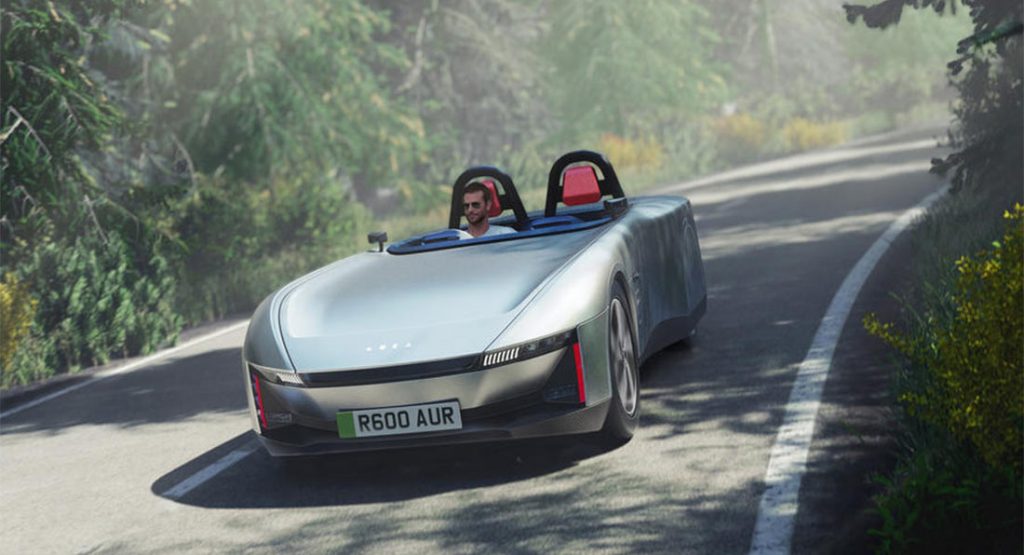A number of British manufacturers have come together and created an electric concept car dubbed the Aura.
The open top two-seater has been brought to life thanks to the likes of Astheimer, Potenza Technology, BAMD Composites, Conjure, and Spark EV. The project, which took just under one year to develop and build, also received funding from the Office for Zero Emission Vehicles.
The exterior of the vehicle has been created with natural fiber composites that are both lightweight and sustainable and were shaped using computational fluid dynamics, making the Aura very aerodynamically efficient. The rear wheels also have covers to further aid in aerodynamics.
Read Also: MG Maze Concept Wants To Make EVs Fun By Adding Real-Life Gaming Into The Mix
Details, including dimensions, for the concept haven’t been announced but it is clearly quite compact and yet despite this, it features a pair of 44 kWh battery packs, making for a total of 88 kWh. The first of these packs is located across the floor of the car while the second pack is positioned under the hood. The EV can apparently travel 400 miles (643 km) on a single charge.
Found within the cabin of the Aura EV are a number of other intriguing features. For example, it has an advanced Human-Machine Interface (HMI) with a 3D visualization that provides real-time feedback on the car’s aerodynamic performance. The car also has a unique steering wheel with a large self-centering screen where the airbag would normally be positioned.
Underpinning the Aura is an advanced software suite from Spark EV that provides readings of battery charge and range to within 99.5 per cent accuracy, all in a bid to eliminate range anxiety. Spark EV CEO Justin Ott told Autocar that the companies who developed the Aura wanted to eliminate buyers’ distrust of electric vehicles by countering what is the most serious concern for many of them: range anxiety. According to Ott, the concept serves as a “showcase to the world how the industry can use technology available today to help overcome these barriers”.













